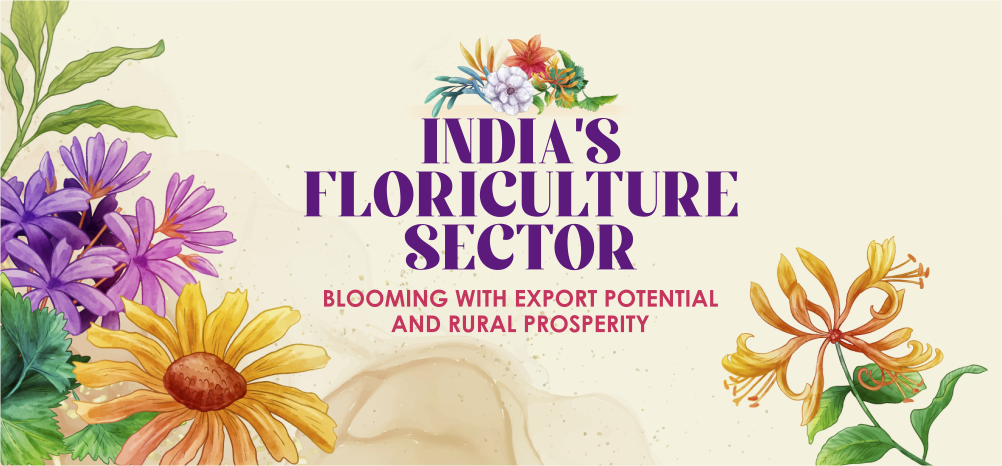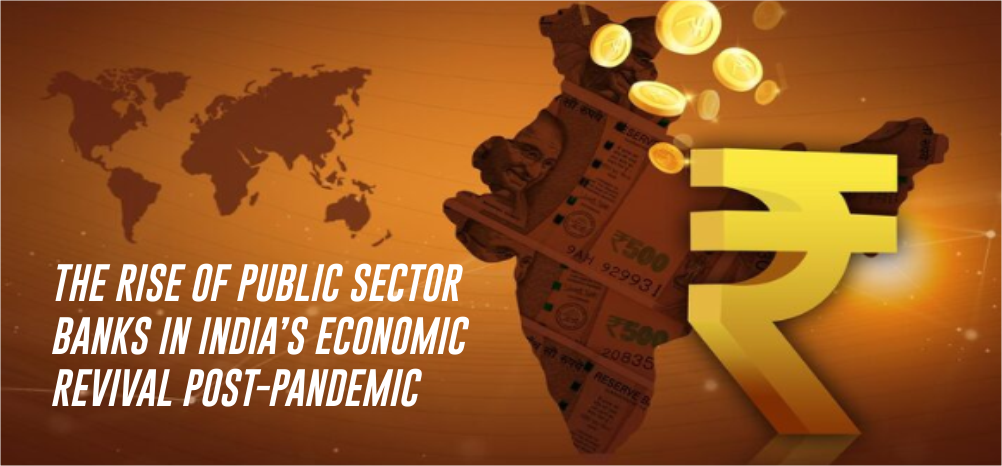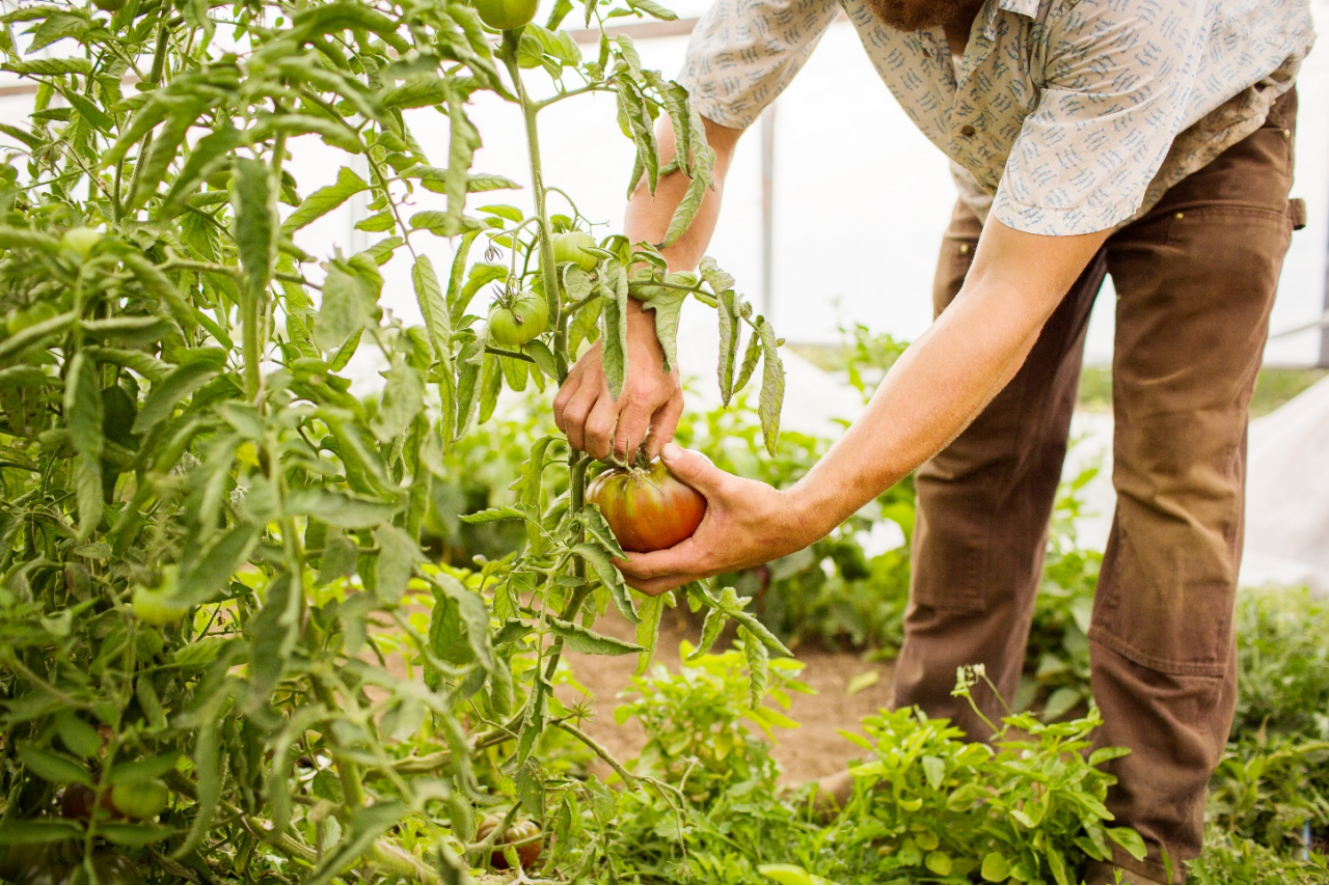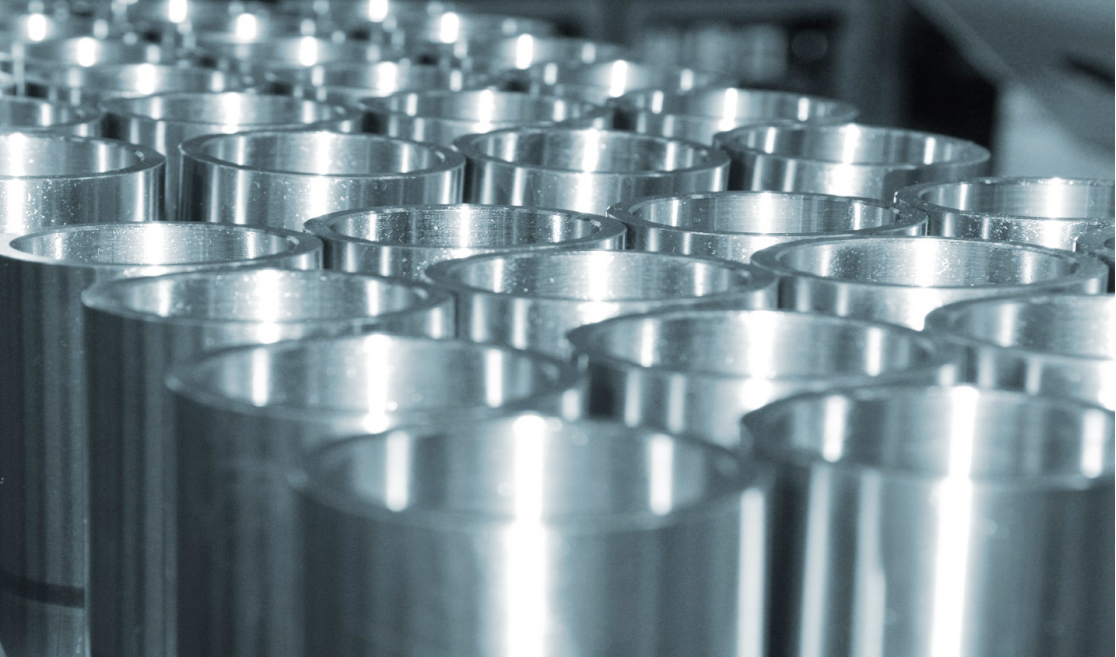India holds the world’s second-largest arable land resources and is home to 20 agri-climatic regions, covering all 15 major global climates. With 46 of the 60 soil types found globally, the country is uniquely positioned for diverse agricultural output. India is the largest producer of spices, pulses, milk, tea, cashew, and jute, and the second-largest producer of wheat, rice, fruits and vegetables, sugarcane, cotton, and oilseeds. It also ranks second globally in overall fruits and vegetables production and leads the world in mango and banana output.
Foodgrain production has touched new highs. According to the Third Advance Estimates, India’s foodgrain output for 2024-25 is expected at a record 3,539.59 LMT, up 6.5% from 2023-24. Rice production alone is estimated at 1,490.74 LMT, marking a YoY rise of 112.49 LMT. As of September 2025, area sown under Kharif crops reached 110.5 million hectares compared to 107.85 million hectares during the same period last year. Wheat stocks in March 2025 stood at their highest in three years, with the Food Corporation of India targeting procurement of 31 million tonnes.
India is also diversifying production. Maize output is projected to double to 86 million tonnes by 2047, supported by high-yield seed adoption and crop diversification. Horticulture has shown robust expansion, rising from 280.70 million tonnes in 2013-14 to 367.72 million tonnes in 2024-25. Rice reserves are being strategically redirected towards ethanol production, aligning with India’s 20% blending target and strengthening agriculture’s role in clean energy.
Foreign investment continues to support growth. Between April 2000 and March 2025, the agriculture services sector received Rs. 18,948 crore (US$ 3.12 billion) in FDI, while agricultural machinery attracted Rs. 12,298 crore (US$ 1.73 billion). The food processing industry, which supports over seven million jobs, has drawn cumulative FDI inflows worth Rs. 86,824 crore (US$ 13.12 billion), accounting for 1.85% of total FDI received across sectors.
The food processing sector itself is rapidly scaling. In FY25, processed vegetables accounted for Rs. 5,945.4 crore (US$ 697 million) processed fruits and juices Rs. 7,898.8 crore (US$ 926 million), and miscellaneous processed items Rs. 13,102.1 crore (US$ 1,536 million). Looking ahead, the sector is projected to reach US$ 1.1 trillion by FY35 and expand to US$ 2.15 trillion by FY47, driven by infrastructure investments in cold storage, abattoirs, and food parks. Dairy companies are expected to grow 11-13% in FY26, supported by Rs. 3,400 crore (US$ 398 million) in capex and increasing focus on value-added products.
Technology is reshaping the sector. India’s smart agriculture market, valued at Rs. 6,033 crore (US$ 714.1 million) in 2024, is projected to grow at a CAGR of 20.54% to Rs. 33,325 crore (US$ 3,837.6 million) by 2033. Precision farming, digital platforms, and automation are driving this shift, enabling higher efficiency and productivity across the agricultural value chain.
Exports remain a strong pillar of growth. Agricultural and processed food exports grew 7.1% YoY in Q1 FY25 to Rs. 51,071 crore (US$ 5.96 billion). Overall agriculture and fisheries exports expanded from Rs. 2,49,264 crore (US$ 35.16 billion) in FY20 to Rs. 4,33,819 crore (US$ 51.23 billion) in FY25, recording a CAGR of 7.82%. Total agri-exports in FY25 reached Rs. 4,40,000 crore (US$ 51.86 billion), the highest ever.
Commodity-specific performance has been noteworthy. Tea exports reached 254.67 million kg in 2024, generating Rs. 7,111.43 crore (US$ 833.70 million) in revenue and positioning India as the world’s third-largest tea exporter. Turmeric exports are projected to touch Rs. 8,549 crore (US$ 1 billion) by 2030, supported by the National Turmeric Board and SPICED initiative, helping India maintain its 58-66% global market share. Rice exports are expected to remain strong, particularly to West Asia, despite global tariff challenges. Tamil Nadu has also set a seafood export target of Rs. 42,745 crore (US$ 5 billion), supported by investments in coastal infrastructure and value addition.
The exports for principal commodities in FY25 were the following:
- Marine Product: US$ 6.73 billion
- Basmati and Non-Basmati Rice: US$ 11.29 billion
- Spices: US$ 3.79 billion
- Buffalo Meat: US$ 3.69 billion
- Sugar: US$ 1.86 billion
- Miscellaneous processed items: US$ 1.53 billion
- Oil Meal: US$ 1.22 billion
India’s agriculture sector, which grew 40% in the past decade, continues to be central to food security, energy transition, job creation, and export competitiveness. In the last quarter of FY25 alone, the sector recorded 5.4% YoY growth, underscoring its resilience and long-term potential.
The Agricultural and Processed Food Products Export Development Authority (APEDA) is implementing strategic initiatives to diversify India's agricultural exports, focusing on key products like fresh fruits, vegetables, processed foods, and animal products.
The budget for Department of Agriculture and Farmers’ Welfare increased from Rs. 21,933.50 crore (US$ 2.53 billion) in 2013-14 to Rs. 1,27,290.16 crore (US$ 14.89 billion) in 2025-26, reflecting the government’s commitment to agricultural development.
The Union Cabinet approved the Prime Minister Dhan-Dhaanya Krishi Yojana (PMDDKY) worth Rs. 24,000 crore (US$ 2.79 billion) from FY26 to boost farm productivity, irrigation, credit access, and post-harvest infrastructure for 1.7 crore farmers across 100 districts
Agricultural credit in India is projected to exceed Rs. 31.5 lakh crore (US$ 368.55 billion) in FY26, driven by increased formalization of rural credit, with National Bank for Agriculture and Rural Development (NABARD) working to address regional imbalances and support tenant farmers.
India’s Free Trade Agreement with the UK signed on July 24, 2025, grants duty-free access to 95% of its agricultural and processed food exports, including marine products, and is expected to boost agri exports by over 20% in three years, supporting its US$ 100 billion target by 2030.
In July 2025, The Coastal States Fisheries Meet 2025 under PM Matsya Sampada Yojana allocated Rs. 255 crore (US$ 29.1 million) for infrastructure and Rs. 364 crore (US$ 41.6 million) to equip 1,00,000 vessels with transponders, while launching Regional Fisheries Management Councils and the Marine Fisheries Census 2025 to enhance safety and governance.
The Pradhan Mantri Kisan SAMPADA Yojana (PMKSY) is strengthening India’s food processing sector, benefiting 34.15 lakh farmers and creating over 4.33 lakh jobs through 1,601 projects.
Under PMKSY-Per Drop More Crop, from FY16 to FY25 (end of Dec. 2024), Rs. 21,968.75 crore (US$ 2.56 billion) was released to states for the implementation of the PDMC scheme, covering an area of 95.58 lakh hectares.
In January 2024, The Ministry of Food Processing Industries has approved the following under the corresponding component schemes of PMKSY: 41 Mega Food Parks, 399 Cold Chain projects, 76 Agro-processing Clusters, 588 Food Processing Units, 61 Creation of Backward & Forward Linkages Projects, and 52 Operation Green projects.
The Centre has granted permission to 5 private companies to conduct cluster farming of specified horticulture crops on approximately 50,000 hectares on a trial basis, with a total investment of Rs. 750 crore (US$ 91.75 million). The 5 companies chosen through a bidding process for the pilot cluster farming program are Prasad Seeds, FIL Industries, Sahyadri Farms, Meghalaya Basin Management Agency.
As per the Union Budget 2025-26:
- Prime Minister Dhan-Dhaanya Krishi Yojana - Agri Districts Programme: A partnership with states to launch a programme covering 100 low-productivity districts, benefiting 1.7 crore farmers through improved crop intensity, credit access, and productivity.
- Building Rural Prosperity and Resilience: A multi-sectoral initiative with states to tackle under-employment in agriculture, promoting skilling, investment, technology, and strengthening the rural economy. Phase-1 targets 100 developing agri-districts.
- Mission for Aatmanirbharta in Pulses: A six-year initiative to enhance domestic production of Tur, Urad, and Masoor, with NAFED and NCCF procuring pulses from farmers for the next four years.
- Comprehensive Programme for Vegetables & Fruits: A state-partnered programme focusing on production, supply chain efficiency, processing, and ensuring remunerative prices for farmers.
- Makhana Board in Bihar: Establishment of a dedicated board to improve the production, processing, value addition, and marketing of Makhana.
- National Mission on High Yielding Seeds: Aimed at boosting research and development, commercial availability, and distribution of over 100 high-yield seed varieties to enhance agricultural productivity.
- Sustainable Fisheries Framework: Introduction of a sustainable fisheries framework focusing on the harnessing of resources from the Indian Exclusive Economic Zone and High Seas, with a special emphasis on the Andaman & Nicobar and Lakshadweep Islands.
- Mission for Cotton Productivity: A five-year mission to significantly improve cotton farming productivity and sustainability, focusing on extra-long staple cotton varieties.
- Enhanced Credit through KCC: The loan limit under the Modified Interest Subvention Scheme increases from Rs. 3 lakh (US$ 3,445) to Rs. 5 lakh (US$ 5,742) for loans under the Kisan Credit Card (KCC).
- Urea Plant in Assam: A new plant with an annual capacity of 12.7 lakh metric tons will be established at Namrup, Assam.
- The agriculture sector's budget has increased from Rs. 11,915.22 crore (US$ 1.38 billion) in 2008-09 to Rs. 1,22,528.77 crore (US$ 14.21 billion) in 2024-25.
- Food grain production has surged from 204.6 million tonnes (2004-05) to an estimated 332.3 million tonnes (2023-24).
- The MSP for paddy and wheat has risen significantly from Rs. 850 (US$ 9.86) and Rs. 1,080 (US$ 12.53) per quintal in 2008-09 to Rs. 2,300 (US$ 26.69) and Rs. 2,425 (US$ 28.14) per quintal in 2023-24, respectively.
- The total MSP paid to farmers increased from Rs. 4.40 lakh crore (US$ 51.04 billion) and Rs. 2.27 lakh crore (US$ 26.34 billion) in 2004-13 to Rs. 12.51 lakh crore (US$ 145.14 billion) and Rs. 5.44 lakh crore (US$ 63.14 billion) in 2014-24, respectively.
- Farmer-Centric Initiatives
- PM-KISAN: Rs. 3.46 lakh crore (US$ 40.14 billion) disbursed to support farmers.
- PMFBY: Rs. 1.65 lakh crore (US$ 19.14 billion) in claims under the Pradhan Mantri Fasal Bima Yojana (PMFBY).
- e-NAM: Over 1,400 mandis integrated for better market access.
- Agricultural Infrastructure Fund (AIF): Sanctioned Rs. 52,738 crore (US$ 6.12 billion) for 87,500+ projects to improve post-harvest management.
- Farmers will soon have access to 109 new high-yielding, climate-resilient varieties of 32 field and horticulture crops.
- To achieve self-sufficiency in pulses and oilseeds, efforts will be made to enhance their production, storage, and marketing. A strategy is being implemented to ensure 'atmanirbharta' for mustard, groundnut, sesame, soybean, and sunflower, as announced in the interim budget.
- Large vegetable production clusters will be developed near major consumption centres. This will promote Farmer-Producer Organizations, cooperatives, and start-ups for the collection, storage, and marketing of vegetables.
- Building on the pilot project's success, the government and states will implement Digital Public Infrastructure (DPI) in agriculture, covering farmers and their lands in 3 years. This year, a digital crop survey for Kharif will be conducted in 400 districts, registering 6 crore farmers and their lands. Jan Samarth-based Kisan Credit Cards will also be issued in 5 states.
- Financial support will establish Nucleus Breeding Centres for Shrimp Broodstocks. NABARD will facilitate financing for shrimp farming, processing, and export.
- Financial support will be provided to set up 50 multi-product food irradiation units in the MSME sector. Additionally, 100 NABL-accredited food quality and safety testing labs will be established.
- India’s seafood exports reached a record US$ 7.17 billion (Rs. 60,000 crore) last year, with frozen shrimp accounting for about two-thirds of the total. To boost competitiveness, it is proposed to reduce the BCD on specific broodstock, polychaete worms, shrimp, and fish feed to 5%, and to exempt customs duty on inputs for shrimp and fish feed production.
As per the Economic Survey 2024-25:
- For FY25, the MSP for arhar and bajra has been increased by 59% and 77% over the weighted average cost of production, respectively. Moreover, the MSP for Masur has risen by 89%, while rapeseed has seen an impressive increase of 98%.
- Since FY16, the government has implemented the Per Drop More Crop initiative under PMKSY, covering 95.58 lakh hectares by December 2024 with Rs. 21,968.75 crore (US$ 2.57 billion) released to states for micro-irrigation, offering 55% subsidy to small/marginal farmers and 45% to others. From 2018 to 2024, loans worth Rs. 4,709 crore (US$ 551 million) were approved under the Micro Irrigation Fund (MIF), with Rs. 3,640 crore (US$ 426.5 million) disbursed, supported by a 2% interest subvention to states.
The agriculture sector in India is expected to generate better momentum in the next few years due to increased investment in agricultural infrastructure such as irrigation facilities, warehousing, and cold storage. Furthermore, the growing use of genetically modified crops will likely improve the yield for Indian farmers. India is expected to be self-sufficient in pulses in the coming few years due to the concerted effort of scientists to get early maturing varieties of pulses and the increase in minimum support price.














